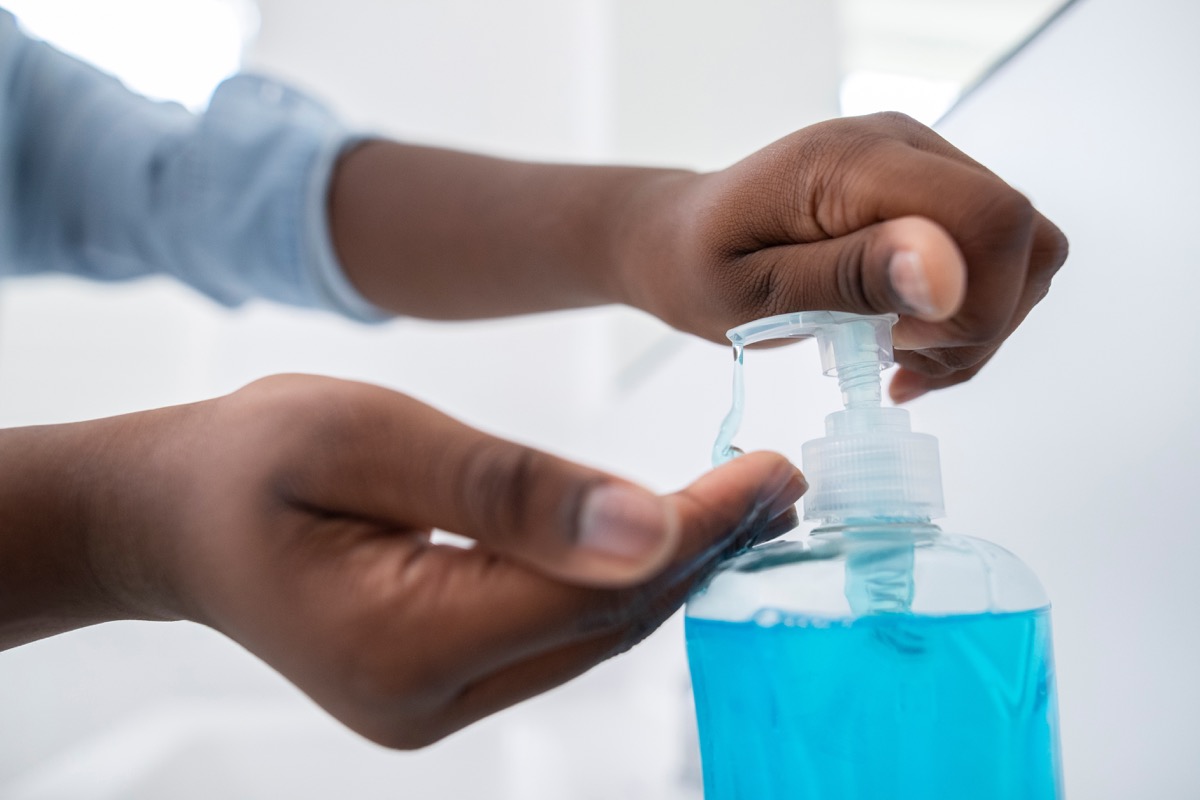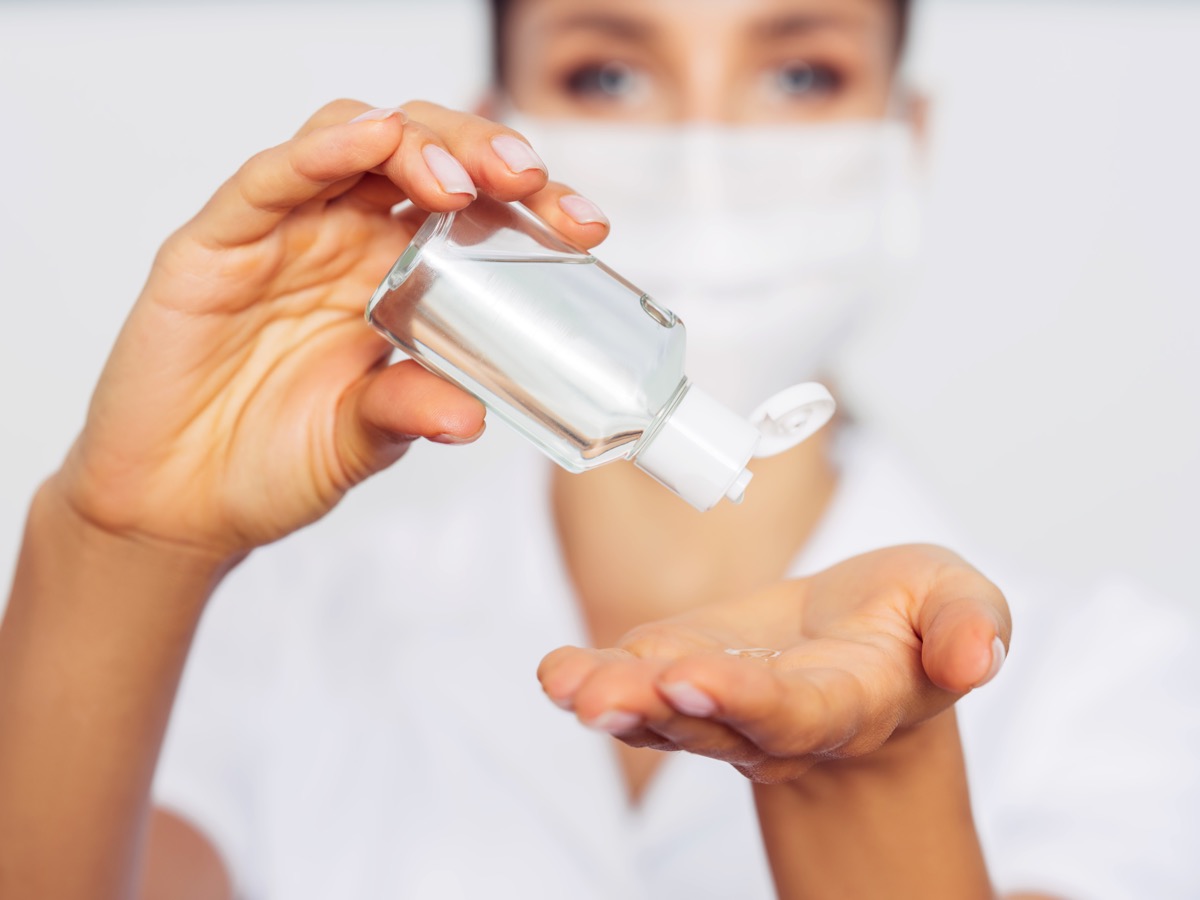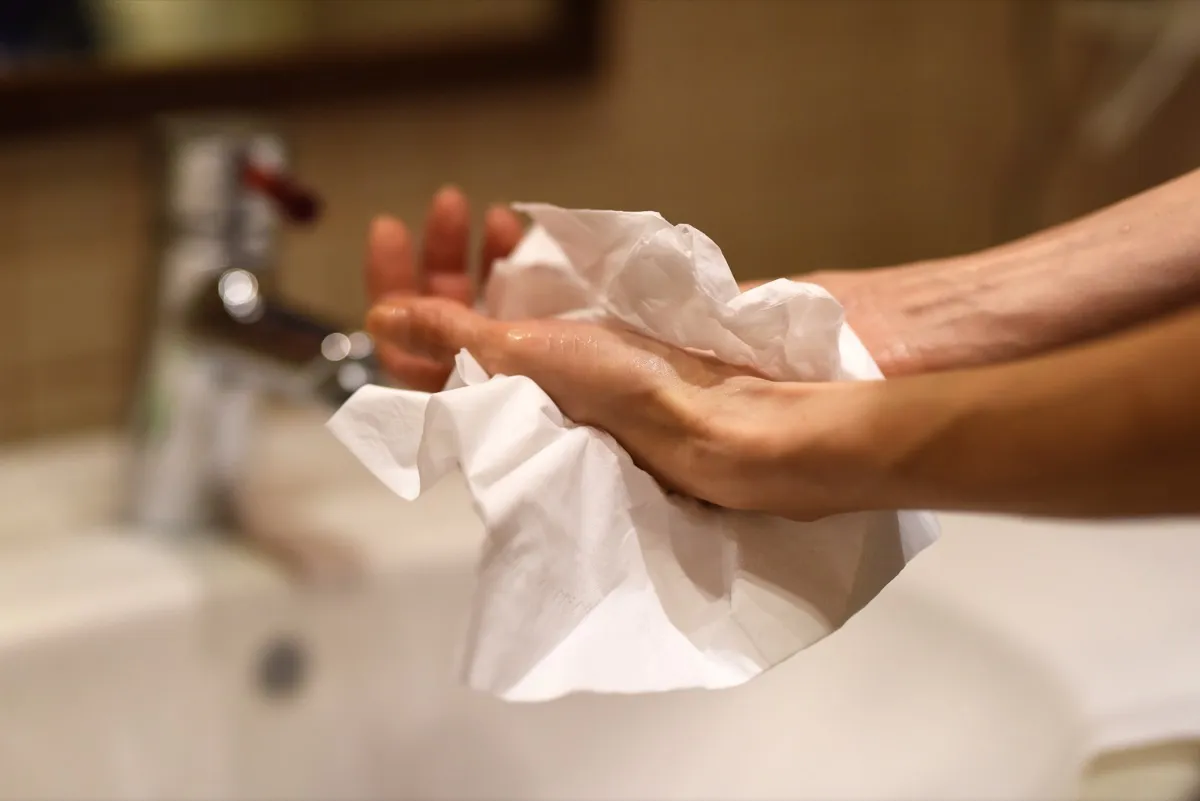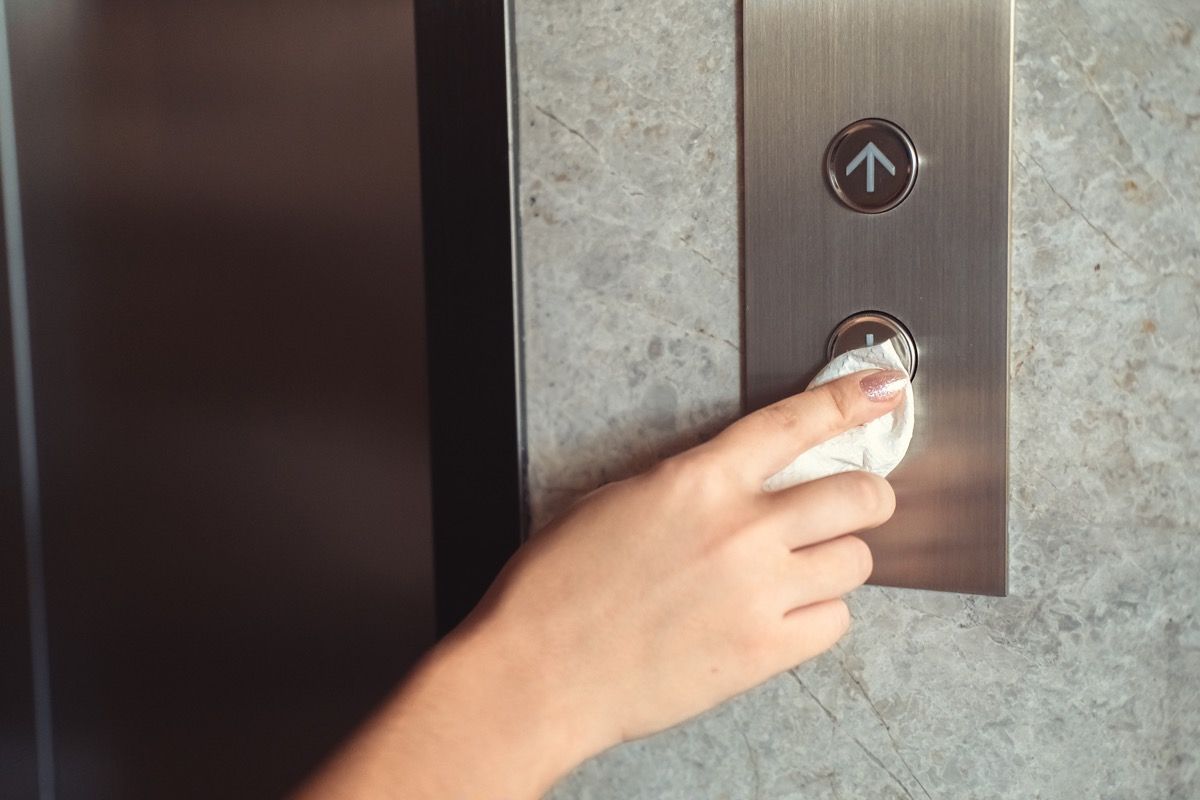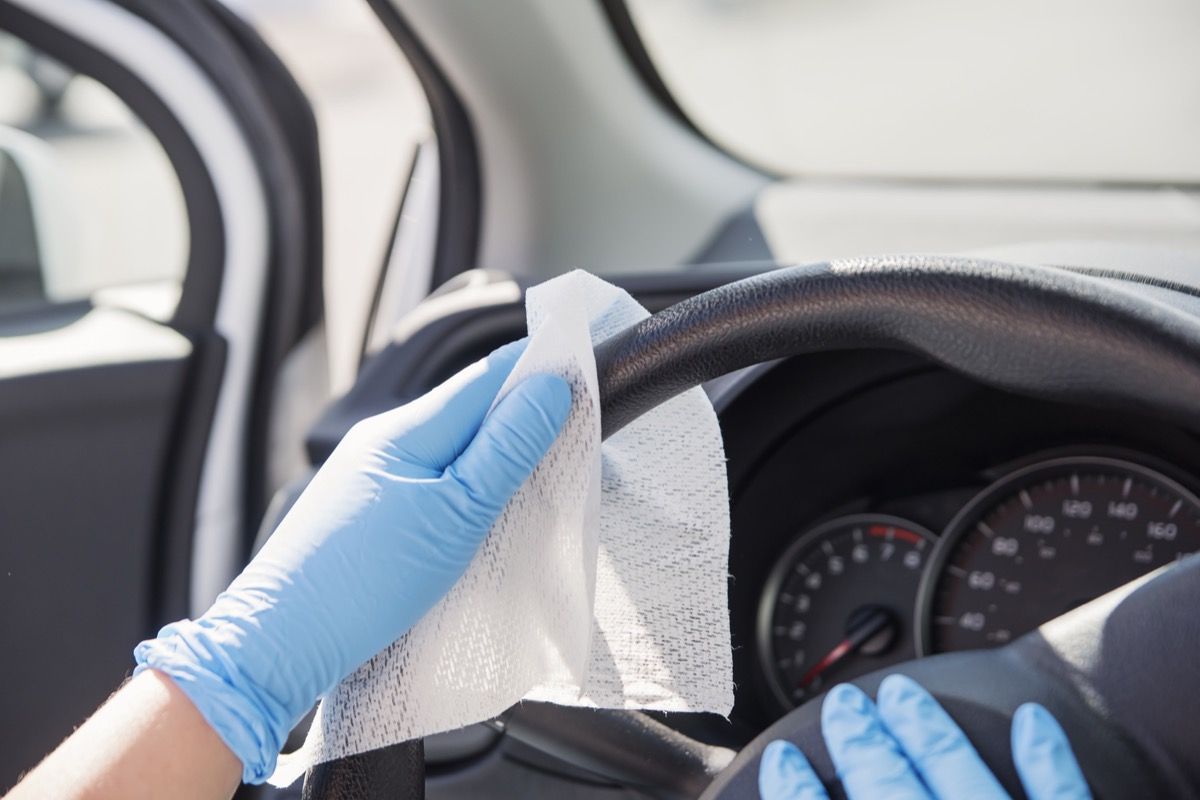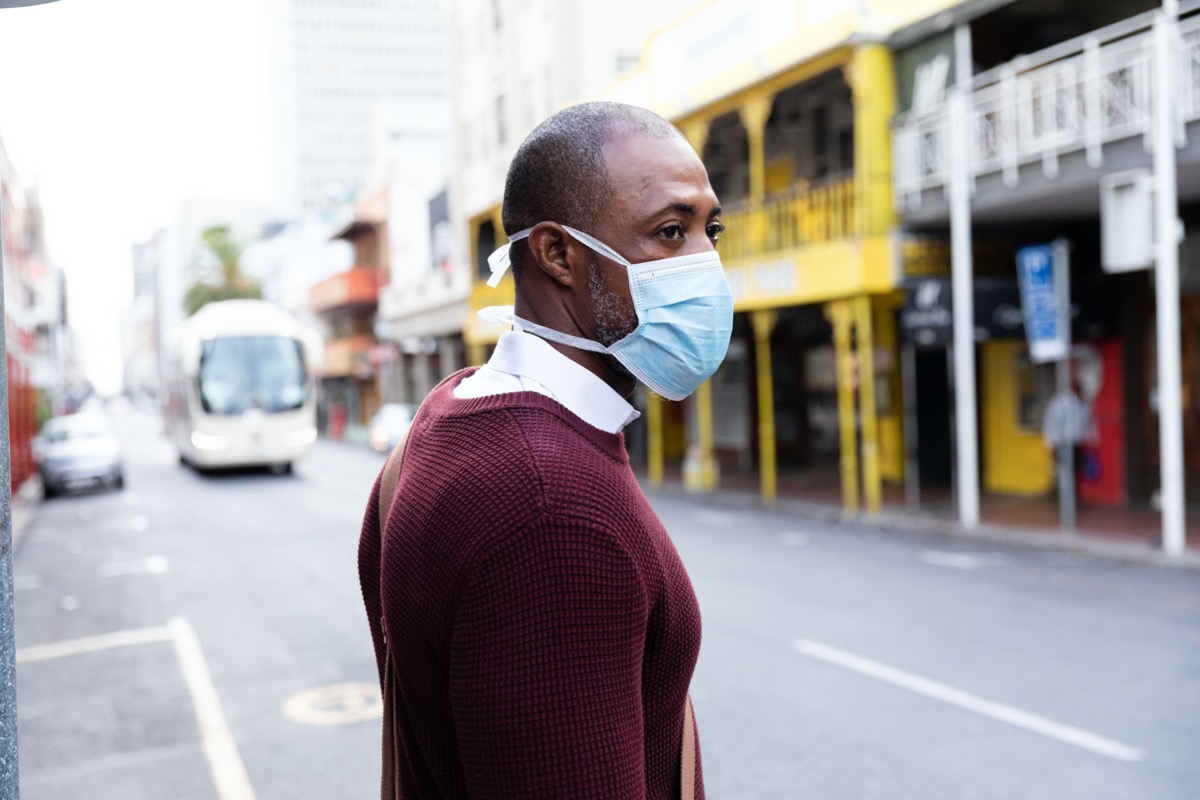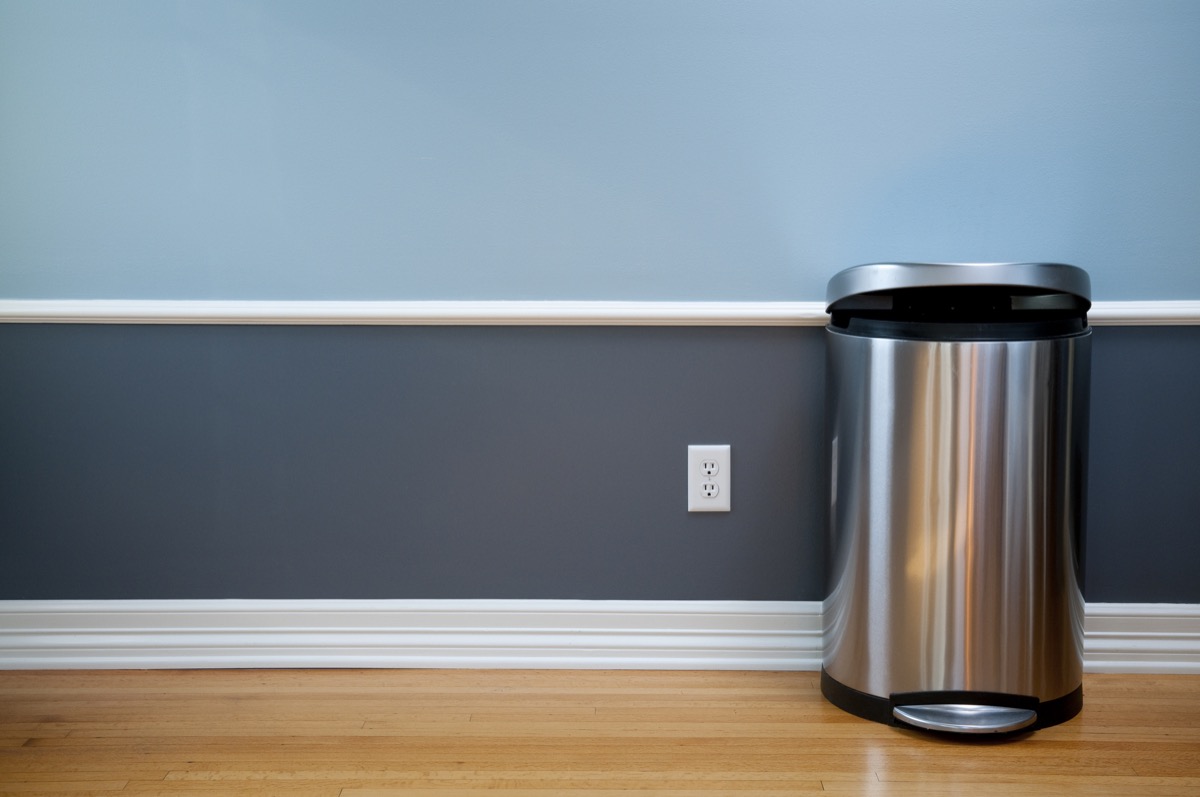The CDC has been highlighting the importance of hand hygiene in fighting the coronavirus since the beginning of the pandemic. That’s because, according to Leann Poston, MD, health expert with Invigor Medical, the protective cover of some viruses—including COVID-19—is a lipid. And if that lipid layer is “disrupted or broken down,” the virus dies.ae0fcc31ae342fd3a1346ebb1f342fcb “Soap is what is called a surfactant. It breaks water’s surface tension and can disrupt the lipid layer,” Poston says. “Destruction of the lipid layer equals the destruction of the virus. You just need to ensure all viral particles on your hands come in contact with the soap.” And for more helpful info about COVID you should know, check out 25 Coronavirus Myths You Need to Stop Believing, According to Doctors. If you don’t have soap and water readily available, however, hand sanitizer is the next best thing. The CDC says that if you’re out and about, you can use hand sanitizer as long as it has an alcohol percentage of 60 percent or more. And for more information you need to know about hand hygiene, check out You Haven’t Been Rubbing in Your Hand Sanitizer Correctly, CDC Says. Third on the CDC’s list of “adequate supplies” for avoiding the coronavirus is paper towels. Why? According to Poston, when people who do not live in the same household are gathered together, like at a summer cookout, you should be using paper towels instead of cloth towels to avoid spreading the virus. “Paper towels ensure that multiple people are not drying their hands with the same cloth towel and possibly spreading infection,” she explains. “Take care when you are removing a paper towel that you do not touch the other sheets in the roll or cross-contamination may still occur.” Tissues serve a similar purpose as paper towel, says Jessie Hawkins, PhD, of the Franklin School of Integrative Health Sciences, a public health researcher trained in epidemiology. Tissues can be used to contain droplets from coughs or sneezes, as well as to place a barrier between your hands and public surfaces you need to touch, like elevator buttons, door handles, and gas pumps. And for more on the former, check out This Is How One Person Gave Coronavirus to 70 People She Never Met. The main way coronavirus is transmitted is via person-to-person contact. But the virus can live on some surfaces for up to three days, so it’s still important to disinfect high-touch items every day with disinfectant wipes. But you should use “more than one wipe on one surface to ensure the area remains wet for approximately three to five minutes,” per CDC guidelines, says Seema Sarin, MD, director of lifestyle medicine at EHE Health. And for more disinfecting tips, check out You’re Definitely Making This Mistake Every Time You Use Disinfectant. In many states, face masks are now mandatory to help prevent the spread of COVID-19. However, even if masks are not required by your local officials, the CDC still recommends “all people 2 years of age and older wear a cloth face covering in public settings and when around people who don’t live in your household, especially when other social distancing measures are difficult to maintain.” And for more about masks, check out The One Face Mask Hack You’re Not Doing But Should Be. Trash can lids are considered high-touch areas amid the coronavirus pandemic. Not only do multiple people use them, but they’re also where you toss all those disinfecting wipes, tissues, and paper towels that could contain COVID droplets. According to Poston, “any surface that multiple people may touch can be a source of spread for COVID.” A no-touch trash prevents the risk of people touching a possibly contaminated lid. And for more up-to-date information, sign up for our daily newsletter.
